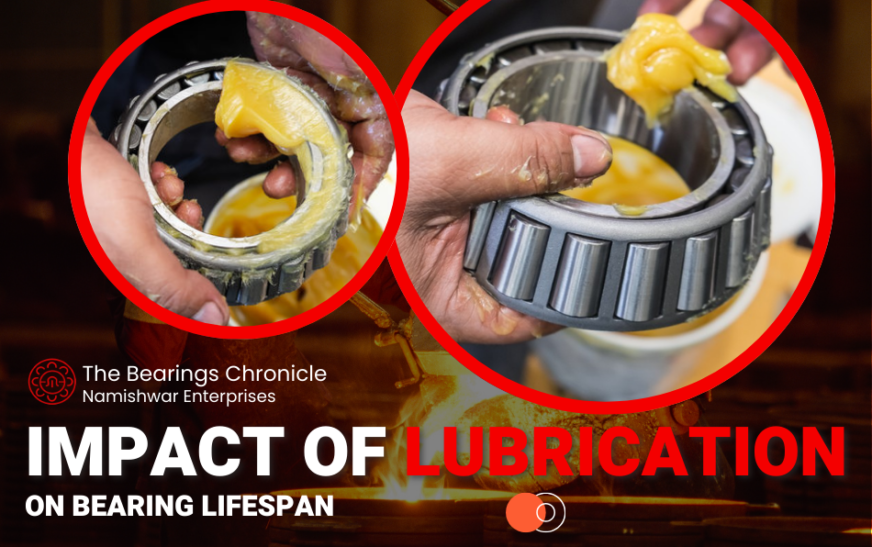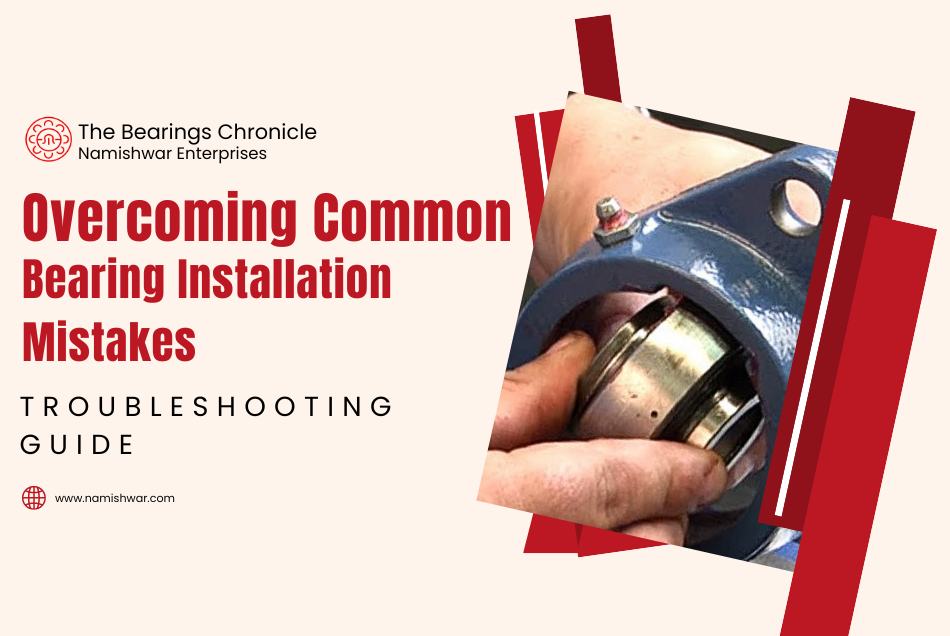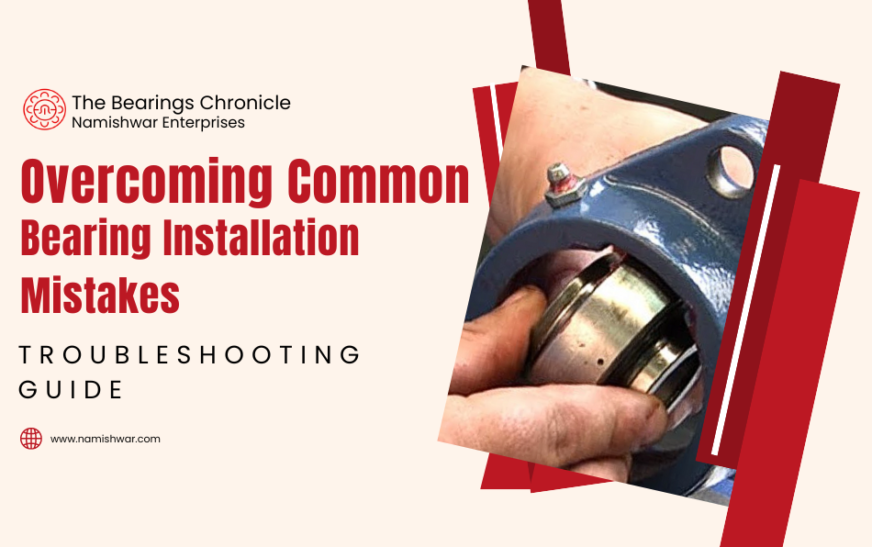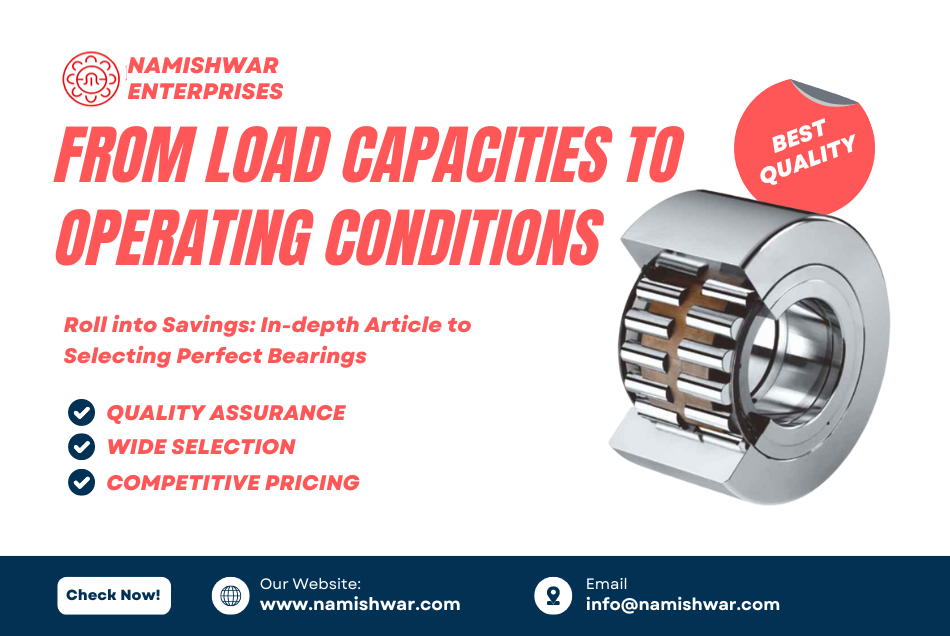Bearings are the unsung heroes of machinery, playing a pivotal role in the smooth operation of countless devices and systems. From the humble household fan to massive industrial machinery, bearings ensure that moving parts rotate smoothly with minimal friction. But did you know that the secret to maximizing their lifespan lies in proper lubrication? In this article, we’ll delve into the importance of lubrication, how it impacts bearing performance, and best practices to ensure your bearings live a long, healthy life.
The Basics of Bearings
Types of Bearings
Bearings come in various shapes and sizes, each designed to handle specific loads and speeds. The most common types include ball bearings, roller bearings, and plain bearings. Each type has unique characteristics that make it suitable for different applications, from supporting heavy loads to facilitating high-speed rotation.
Common Applications
Bearings are everywhere! They can be found in everything from household appliances, like refrigerators and washing machines, to industrial equipment, such as conveyor belts and turbines. In the automotive industry, bearings are essential components in engines, transmissions, and wheel assemblies. Their versatility and reliability make them indispensable in virtually every sector.
Understanding Lubrication
Definition and Purpose
Lubrication is the process of applying a substance (usually a fluid) between two surfaces to reduce friction and wear. The primary purpose of lubrication in bearings is to create a thin film that separates the rolling elements and the raceways, preventing direct contact and minimizing friction.
Types of Lubricants
There are three main types of lubricants used in bearings: grease, oil, and solid lubricants. Grease is a semi-solid lubricant that consists of a base oil, thickener, and additives. It’s commonly used in applications where contamination must be minimized. Oil, on the other hand, is a fluid lubricant that provides excellent cooling and can be easily circulated. Solid lubricants, such as graphite or molybdenum disulfide, are used in extreme conditions where liquid lubricants are ineffective.
The Role of Lubrication in Bearing Performance
Reducing Friction
Lubrication plays a crucial role in reducing friction between the moving parts of a bearing. By creating a thin film of lubricant, it minimizes the contact between the rolling elements and the raceways, allowing for smoother operation and reducing the energy required to move the components.
Minimizing Wear and Tear
Proper lubrication significantly reduces wear and tear on bearings. Without adequate lubrication, metal-to-metal contact can occur, leading to surface degradation, pitting, and even catastrophic failure. By providing a protective barrier, lubricants help extend the life of bearings by reducing the rate of wear.
Cooling the Bearing
Lubrication also serves as a cooling agent. As bearings operate, friction generates heat, which can lead to thermal expansion and, in extreme cases, failure. Lubricants help dissipate this heat, maintaining the bearing’s temperature within safe limits and preventing thermal damage.
Factors Affecting Bearing Lubrication
Lubricant Viscosity
Viscosity, or the thickness of the lubricant, is a critical factor in bearing performance. The right viscosity ensures that the lubricant forms an adequate film while also being thin enough to flow and provide cooling. Too thick, and it might not circulate properly; too thin, and it won’t provide sufficient protection.
Operating Temperature
The operating temperature of the bearing can significantly affect the lubricant’s properties. As temperature increases, the viscosity of most lubricants decreases, potentially compromising the protective film. It’s essential to choose a lubricant that maintains its properties over the expected temperature range.
Load and Speed
The load and speed at which a bearing operates also play a role in lubrication. Heavier loads and higher speeds can increase the pressure and shear forces within the bearing, necessitating the use of specialized lubricants designed to withstand these conditions.
Contamination and Cleanliness
Contaminants such as dirt, water, and other foreign particles can significantly impact lubrication quality. They can introduce abrasives that wear down the bearing surfaces or react with the lubricant to form harmful substances. Ensuring a clean environment and proper sealing can help maintain lubricant integrity.
Lubrication Methods
Grease Lubrication
Grease is a popular choice for many bearing applications due to its ability to stay in place and provide long-lasting protection. It’s ideal for applications where relubrication is challenging or where contamination needs to be minimized.
Oil Lubrication
Oil lubrication is often used in high-speed applications where efficient cooling is necessary. It can be applied through various methods, including oil baths, splash lubrication, and forced circulation systems.
Solid Lubrication
In environments where traditional lubricants may not be suitable, solid lubricants offer a viable alternative. These are often used in extreme conditions, such as high temperatures or vacuum environments, where liquid lubricants would evaporate or degrade.
Mist Lubrication
Mist lubrication involves spraying a fine mist of lubricant onto the bearing surfaces. This method is effective in applications where minimal lubrication is required or where the lubricant must be evenly distributed.
Choosing the Right Lubricant
Compatibility with Bearing Materials
The compatibility of the lubricant with the bearing materials is crucial. Some lubricants may react with certain metals, causing corrosion or degradation. It’s essential to select a lubricant that is chemically compatible with the bearing components.
Environmental Considerations
Environmental factors, such as temperature, humidity, and exposure to chemicals, can affect the choice of lubricant. For instance, in wet or corrosive environments, a lubricant with anti-corrosion additives may be necessary.
Application-Specific Requirements
Different applications have unique lubrication requirements. For example, food processing equipment requires food-grade lubricants that are safe for incidental contact with food. Understanding the specific needs of the application is key to choosing the right lubricant.
Consequences of Improper Lubrication
Increased Friction and Heat
Improper lubrication can lead to increased friction, which in turn generates excessive heat. This can cause the bearing to expand, potentially leading to misalignment or failure.
Accelerated Wear and Damage
Without adequate lubrication, bearings can experience accelerated wear and damage. This can result in surface pitting, scuffing, or even catastrophic failure, necessitating costly repairs or replacements.
Potential Bearing Failure
In the worst-case scenario, improper lubrication can lead to complete bearing failure. This can cause unexpected downtime, safety hazards, and significant financial losses.
Best Practices for Bearing Lubrication
Proper Lubricant Application
Applying the right amount of lubricant is crucial. Too little, and the bearing won’t be adequately protected; too much, and it can cause churning and overheating. Following the manufacturer’s guidelines and using precise application methods can help ensure optimal lubrication.
Regular Maintenance and Monitoring
Routine maintenance and monitoring of lubrication are essential for bearing longevity. This includes checking lubricant levels, assessing its condition, and topping up or replacing it as necessary.
Storage and Handling of Lubricants
Proper storage and handling of lubricants are often overlooked but are crucial for maintaining their quality. Lubricants should be stored in a clean, dry environment, away from extreme temperatures and contaminants.
Innovations in Bearing Lubrication
Self-Lubricating Bearings
Self-lubricating bearings are designed to release lubricant gradually, reducing the need for maintenance and extending their lifespan. These bearings are ideal for applications where regular relubrication is challenging.
Smart Lubrication Systems
Advancements in technology have led to the development of smart lubrication systems that monitor bearing conditions and automatically dispense the right amount of lubricant. These systems help optimize lubrication, reduce waste, and prevent over- or under-lubrication.
Nano-Lubricants
Nano-lubricants incorporate nanoparticles that enhance the properties of traditional lubricants. They offer improved friction reduction, wear resistance, and thermal stability, making them ideal for high-performance applications.
Case Studies: Real-World Examples
Industry-Specific Insights
In the aerospace industry, bearings operate under extreme conditions, including high speeds and temperatures. The use of specialized lubricants, such as synthetic oils, has been crucial in ensuring the reliability and safety of aircraft components.
Success Stories and Lessons Learned
A major automotive manufacturer faced frequent bearing failures due to improper lubrication. By switching to a high-quality synthetic grease and implementing a rigorous maintenance schedule, they significantly reduced downtime and extended the lifespan of their bearings.
Conclusion
In conclusion, lubrication plays a critical role in the performance and longevity of bearings. From reducing friction and wear to providing cooling and preventing contamination, proper lubrication is essential for maintaining bearing health. As technology advances, new and innovative lubrication solutions continue to emerge, offering improved performance and convenience. By understanding the importance of lubrication and following best practices, you can ensure that your bearings operate smoothly and efficiently for years to come.
FAQs
- What is the most common type of lubricant used in bearings?
- Grease is the most common lubricant due to its ability to stay in place and provide long-lasting protection.
- Can I use any lubricant for my bearings?
- No, it’s essential to use a lubricant compatible with your bearing materials and suitable for your specific application.
- How often should I relubricate my bearings?
- The frequency of relubrication depends on the application, operating conditions, and the type of lubricant used. Always follow the manufacturer’s recommendations.
- What are the signs of improper lubrication in bearings?
- Signs include increased noise, vibration, heat, and visible wear or damage on the bearing surfaces.
- Are self-lubricating bearings maintenance-free?
- While self-lubricating bearings require less maintenance, it’s still essential to monitor their condition and ensure they operate correctly.










